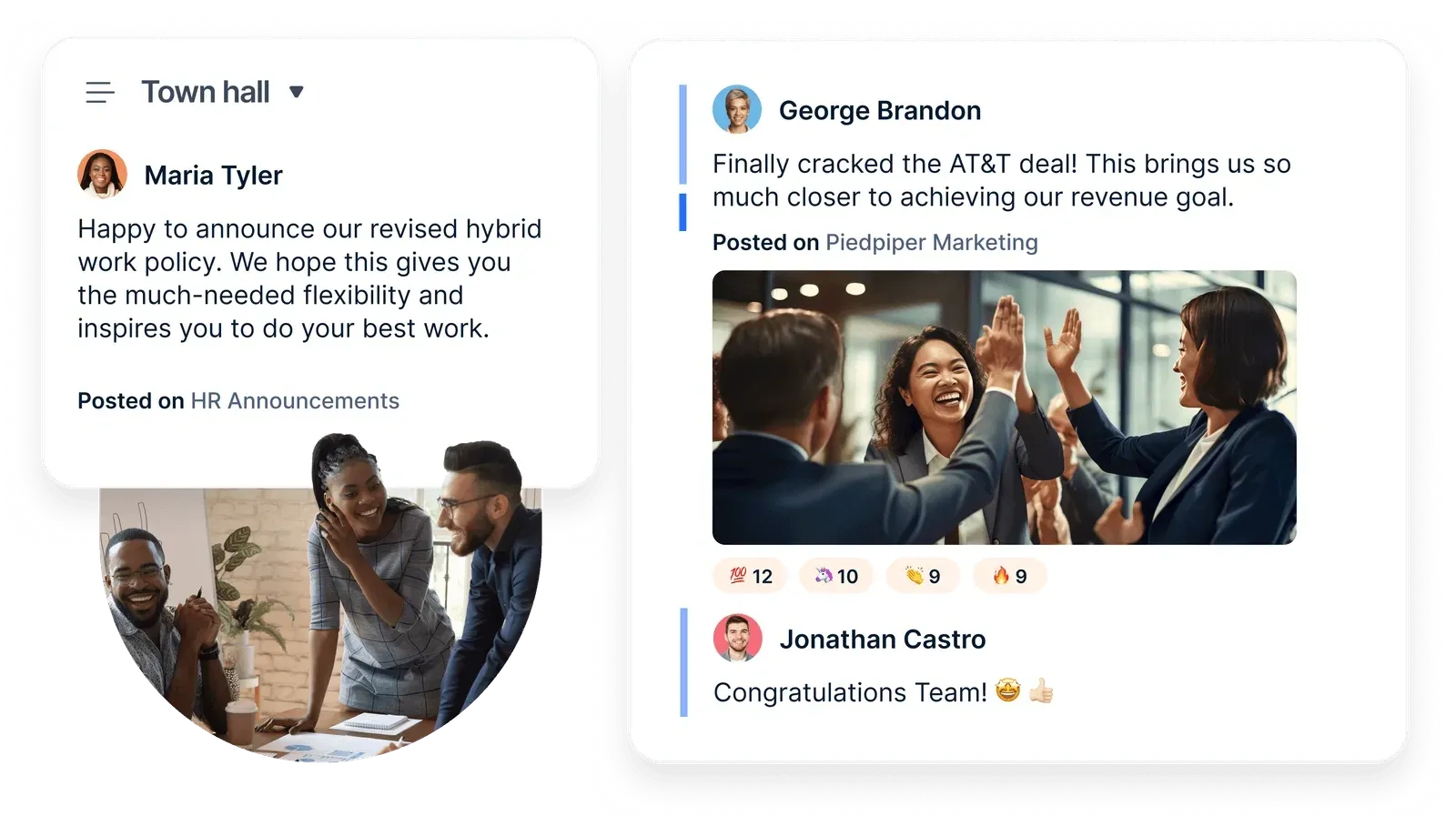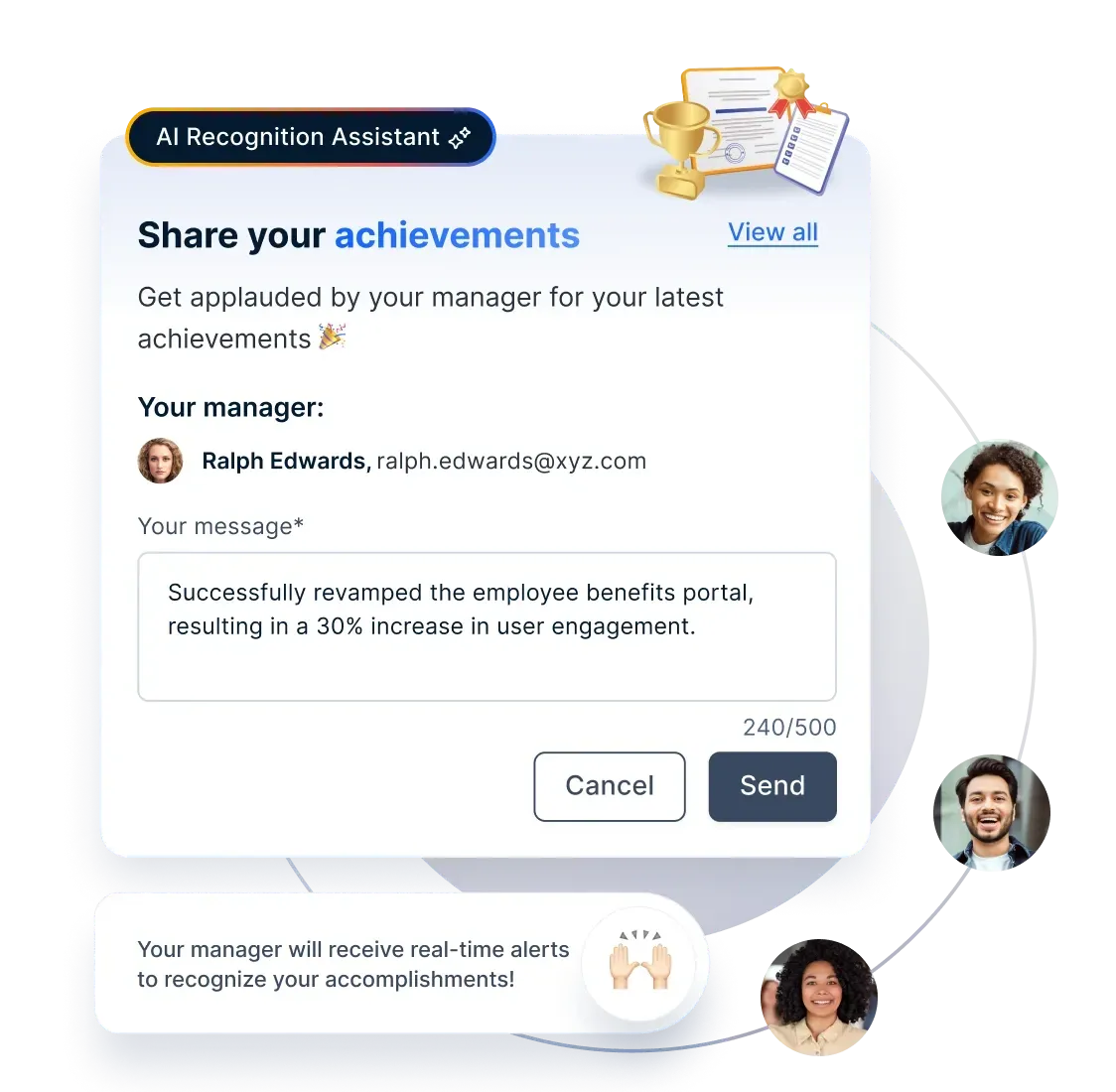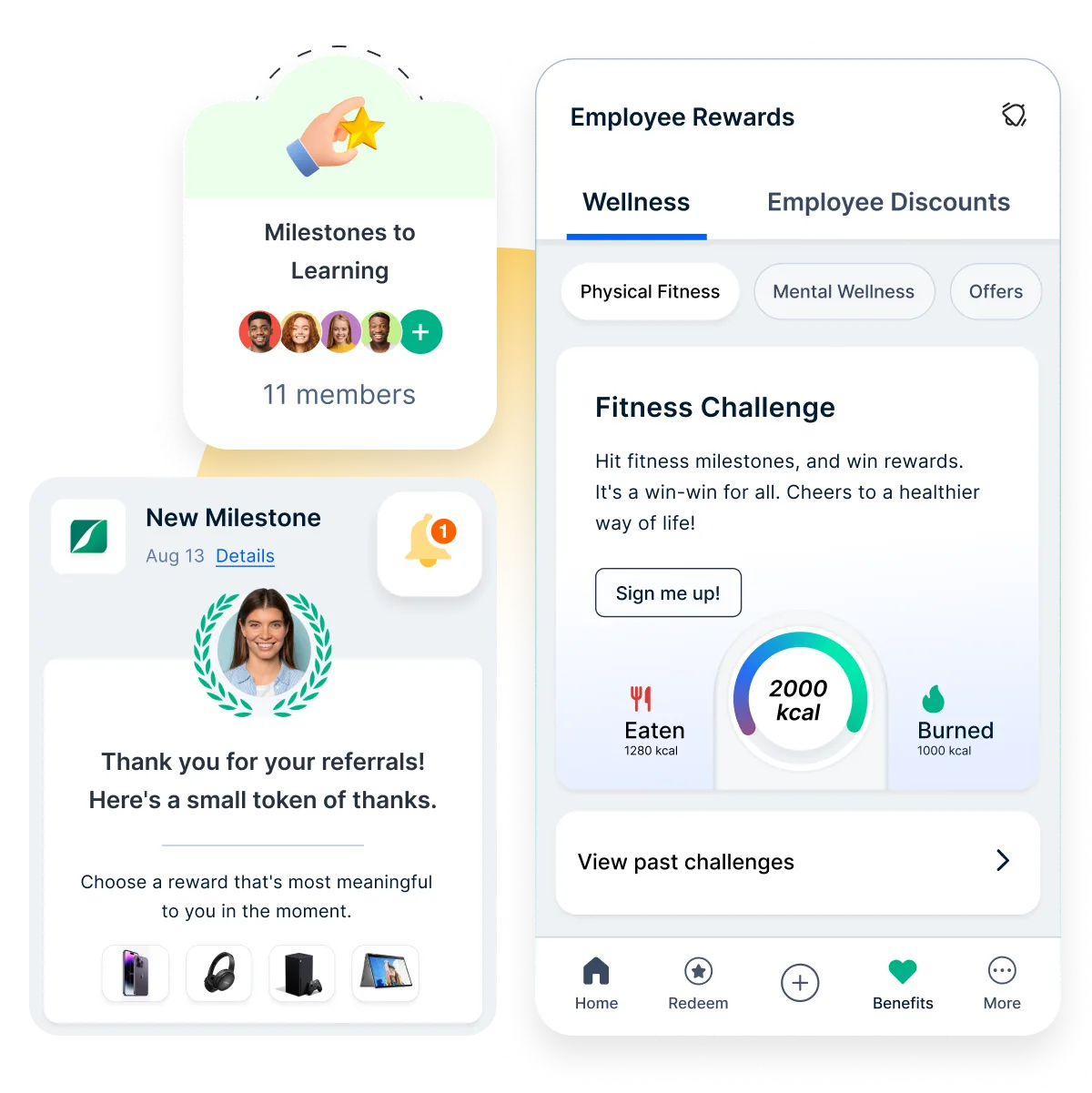Psychological Safety in the Workplace: Why It Matters and How to Build It
Explore the importance of psychological safety in the workplace and discover practical steps to build a culture of openness, innovation, and high team performance.
On this page
- What is psychological safety at work?
- Why does psychological safety in the workplace matters now more than ever?
- What is the importance of psychological safety in workplace?
- What are the stages of psychological safety in the workplace?
- What does psychological safety in the workplace look like?
- How to create psychological safety at work?
- Empuls: Empowering psychological safety at work
- Conclusion
- FAQs
A thriving workplace is more than just productive—it’s a place where employees feel safe to speak up, share ideas, and admit mistakes without fear of judgment or consequences.
This is the essence of psychological safety in the workplace, and it's quickly becoming a critical ingredient for building high-performing, innovative teams.
When people feel psychologically safe, collaboration improves, engagement rises, and creativity flows. But when that safety is missing, employees are more likely to stay silent, avoid risk, and disengage from the team.
Research by the Ecsell Institute in 2022 found that leaders rated highly by their teams (a 9 or 10 on leadership skills) fostered an average psychological safety score of 84%. In contrast, those with lower ratings (6 or below) saw that score drop sharply to just 36%. The data speaks volumes—strong leadership and psychological safety go hand in hand.
Creating psychological safety in the workplace is not a one-time effort. It requires consistent, conscious actions from leaders to build trust, promote inclusion, and ensure that every voice is heard.
In this blog, we’ll explore why psychological safety matters and how you can build it within your organization.
What is psychological safety at work?
Psychological safety, a term popularized by Harvard Business School professor Amy Edmondson, refers to an environment where individuals feel safe to take risks, make mistakes, and voice their opinions without fear of punishment or humiliation. It's a crucial concept for fostering a healthy and productive workplace culture.
When employees feel psychologically safe, they are more likely to contribute their unique perspectives, collaborate effectively, and engage in open communication. But why does it matter the most now? Let’s unravel.
Why does psychological safety in the workplace matters now more than ever?
Since the pandemic, hybrid and remote work have changed how teams interact. Leaders now face new challenges in building psychological safety in the workplace. When employees are not in the same location, creating trust becomes more complex.
People no longer have spontaneous conversations. Most discussions are scheduled and happen through screens. This shift makes creating psychological safety in the workplace even more important. But remote work also opens new doors. Leaders who pay attention can still build strong connections and trust with their teams.
Virtual meetings allow leaders to truly focus. In person, it can feel uncomfortable to hold eye contact for too long. But on camera, no one knows where you're looking. This gives leaders a chance to observe body language, tone, and emotion without awkwardness. It’s a powerful tool for listening and building trust.
Some team members feel safer typing than speaking. Sharing a vulnerable thought in a chat may be easier than saying it out loud. Written messages also give people more time to think before responding.
Leaders can support this by showing appreciation for honest input. Respecting these moments encourages more openness and builds a stronger team culture.
What is the importance of psychological safety in workplace?
The importance of psychological safety in a work environment cannot be overstated. It is a foundational element that directly impacts employee well-being, productivity, collaboration, creativity, and overall organizational success.
- A 76% rise in overall employee engagement.
- A 67% boost in employees applying new skills they've learned on the job.
- A 50% increase in productivity.
- A 57% higher likelihood of enhanced teamwork and collaboration among staff members.
Here's why psychological safety in the workplace is important:
1. Enhanced communication
Psychological safety encourages open and honest communication among team members. When employees feel safe expressing their opinions, sharing concerns, and asking questions, it leads to better information sharing, fewer misunderstandings, and improved problem-solving.
2. Increased innovation and creativity
In psychologically safe environments, employees are more likely to take risks and share creative ideas without fear of criticism or rejection. This leads to a culture of innovation, as individuals are willing to experiment, propose new approaches, and challenge the status quo.
3. Better decision-making
When individuals feel psychologically safe, they are more comfortable participating in discussions and contributing diverse viewpoints. This leads to better-informed decisions that consider a wider range of perspectives, ultimately resulting in improved outcomes.
4. Higher employee engagement
Psychological safety fosters a sense of belonging and ownership among employees. When they feel valued, respected, and heard, they become more engaged with their work, leading to increased motivation and commitment to the organization's goals.
5. Reduced fear of failure
A psychologically safe environment helps employees view failure as an opportunity for growth rather than a reason for punishment. This encourages them to take calculated risks, explore new ideas, and learn from their experiences.
Psychological safety is not just a nice-to-have aspect of a workplace; it is a fundamental prerequisite for a healthy, productive, and innovative organization. When employees feel safe to express themselves, collaborate, and take risks, the entire organization benefits from improved communication, engagement, creativity, and overall performance.
What are the stages of psychological safety in the workplace?
Psychological safety isn't typically characterized by distinct stages in the same way that a linear process might be. Instead, it's more of an ongoing and evolving aspect of workplace culture.
However, you can think of the development of psychological safety as a progression involving various elements and dynamics.
Just like Maslow’s hierarchy of needs, the journey starts with a sense of belonging. Employees need to feel included before they can fully engage and contribute. When people feel accepted, they are more likely to take part in meaningful work that improves their teams and companies.
Dr. Timothy Clark, author of The 4 Stages of Psychological Safety: Defining the Path to Inclusion and Innovation, outlines these four stages. Moving through each one helps in creating psychological safety in the workplace.
Stage 1 — Inclusion safety
This is the first step toward building trust. Inclusion safety meets the human need to connect. At this stage, people feel safe to be themselves. They are accepted for who they are, including their unique background and personality.
Stage 2 — Learner safety
Here, the focus is on growth. Learner safety allows people to ask questions, give and receive feedback, try new things, and even fail without fear. Learning is safe, which helps employees grow and develop their skills.
Stage 3 — Contributor safety
Contributor safety gives employees the confidence to make a difference. At this stage, people feel safe using their talents and strengths to add value. They know their input matters and that they can speak up without judgment.
Stage 4 — Challenger safety
In the final stage, employees feel safe to question how things are done. Challenger safety gives them the freedom to speak up, suggest improvements, and challenge ideas that no longer work. This leads to innovation and better decision-making
The goal is to create an environment where people feel respected, valued, and empowered to contribute their best to the organization's success. Because if done well, you will notice psychological safety through the cultural shift.
What does psychological safety in the workplace look like?
Psychological safety in the workplace builds over time. It happens when team members feel safe to be themselves. They believe they can take smart risks without fear. When this safety exists, people can:
- admit and talk about their mistakes,
- speak openly about problems and hard topics,
- ask for help and give honest feedback,
- trust that no one is trying to harm them, and
- know they are a valued part of the team.
Let’s say an employee brings up a tough question to their boss. This may feel risky. The leader might see it as negative or disrespectful. Depending on the team culture, that moment could even hurt the employee’s image or job.
That’s why creating psychological safety in the workplace matters so much. It helps reduce fear and builds trust. Teams with psychological safety are more likely to grow, solve problems, and share bold ideas.
If you're wondering how to collaborate with your colleagues to build psychological safety together, start by listening with empathy. Encourage questions. Make space for new voices. And most of all, lead by example. Following is how you create psychological safety at work.
How to create psychological safety at work?
Creating psychological safety at work is a multifaceted process that involves fostering an environment where employees feel comfortable, valued, and able to express themselves without fear of negative consequences. Here's a detailed explanation of how to create psychological safety:
1. Lead by example
Leaders and managers should set the tone for psychological safety through their actions and behaviors. They need to demonstrate vulnerability by sharing their own challenges, admitting mistakes, and seeking input from their teams. When leaders are open about their own fallibility, it encourages employees to feel safe doing the same.
2. Encourage open communication
Foster a culture of open and honest communication throughout the organization. Ensure that employees know their voices are valued and that they have the space to express their opinions, ask questions, and voice concerns without fear of reprisal.
Tools like Empuls support open communication through features like anonymous pulse surveys, community discussions, and feedback channels. Employees can safely voice concerns, ask questions, and participate in company-wide dialogues, helping foster psychological safety across distributed teams.
3. Build trust and respect
Cultivate an atmosphere of trust and respect by consistently showing that you value diverse perspectives and ideas. Trust is built through transparent actions, keeping promises, and treating employees fairly and equitably.
4. Promote feedback
Establish a culture of regular feedback. Encourage employees to give constructive feedback to one another and to their superiors. When feedback is framed as an opportunity for growth rather than criticism, it contributes to an environment of psychological safety.
With Empuls, regular feedback becomes a habit, not an exception. The platform enables continuous performance feedback, mood check-ins, and employee pulse surveys—making it easier for managers and teams to share feedback constructively and consistently.
5. Empower employees
Give employees the autonomy and authority to make decisions within their roles. When individuals feel empowered, they are more likely to take ownership of their work, share ideas, and contribute actively to the organization's goals.
6. Recognize and appreciate
Acknowledge employees' contributions and efforts openly. Publicly recognizing achievements and celebrating successes, no matter how small, reinforces the idea that every individual's work is valued.
Recognition is a key driver of psychological safety. With Empuls, organizations can automate timely recognition, celebrate both big and small wins, and encourage peer-to-peer appreciation—creating a culture where every effort feels seen and valued.
7. Set clear expectations
Clearly define expectations for job performance and behavior. When employees know what is expected of them, they are more confident in their actions and decisions, which contributes to their sense of psychological safety.
8. Address conflict constructively
Provide resources and guidance for addressing conflicts in a constructive manner. Conflict resolution skills help prevent tensions from escalating and damaging the psychological safety of the workplace.
9. Provide training and resources
Offer training programs and resources on topics such as effective communication, active listening, empathy, and conflict resolution. These skills contribute to a healthier and more psychologically safe work environment.
10. Embrace diversity and inclusion
Create an inclusive environment where employees from different backgrounds and perspectives feel welcome. Actively seek diverse voices and ensure that all employees are treated with respect and dignity.
11. Promote a learning culture
Encourage a culture of continuous learning and improvement. Make it clear that mistakes are opportunities for growth and that innovation often comes from taking calculated risks.
12. Zero tolerance for harassment
Communicate a strong stance against any form of harassment or bullying. Establish clear procedures for reporting such incidents and ensure that appropriate actions are taken promptly.
Apple ensures that employees are aware of what constitutes harassment and the repercussions associated with it. They conduct regular training sessions to educate employees and ensure compliance with their policies.
Apple has established various avenues for employees to report any form of harassment, ensuring anonymity and protection for those coming forward.
Creating psychological safety requires a holistic approach that involves consistent efforts from leadership, managers, and employees at all levels of the organization. As psychological safety grows, employees will feel more empowered to contribute their ideas, collaborate openly, and take the necessary risks to drive innovation and growth.
Empuls: Empowering psychological safety at work
Empuls by Xoxoday aligns seamlessly with the pillars of psychological safety:
Transparent communication
Social Intranet fosters open dialogue via posts, polls, AMAs, and video updates. Community Groups allow employees to interact based on shared interests or functions.

Inclusive recognition
Peer-to-peer and Values-based Awards empower employees to recognize each other without hierarchy. Smart Nudges from Em (AI assistant) ensure no one is left unacknowledged.

Safe feedback loops
eNPS, Pulse, and Lifecycle Surveys gather real-time employee sentiment anonymously. 360° Feedback Tools ensure feedback is candid and multi-directional.
Autonomy and empowerment
Employees choose their own rewards from a global catalog of 1M+ perks, gift cards, experiences, and benefits. Flexible fringe benefits let employees personalize perks based on lifestyle and values.

Celebrate milestones with respect
Service Awards & Wishboards collect heartfelt messages from colleagues—building a sense of belonging and pride.

Psychological safety isn’t just a checkbox—it’s the engine of innovation, engagement, and retention. With Empuls, you can embed psychological safety into daily workflows, supported by AI, personalization, and thoughtful design. It empowers leaders to build stronger cultures and gives employees the voice and courage to thrive. Schedule a call now with our experts!
Conclusion
Psychological safety is the foundation of a workplace where people feel heard, valued, and empowered to contribute. By promoting open communication, trust, and inclusion, organizations can unlock greater collaboration, innovation, and performance.
It’s a continuous effort—but one that pays off. Whether you're leading a team or part of one, your commitment to building psychological safety can create a lasting impact on both people and performance.
FAQs
1. What are the 5 C's of Psychological Safety?
The 5 C's framework includes:
- Clarity – Clear expectations and roles.
- Candor – Open, honest communication.
- Curiosity – Encouraging questions and learning.
- Compassion – Empathetic leadership and support.
- Consistency – Reliable actions that build trust.
2. What are the 4 Types (Stages) of Psychological Safety?
Based on Dr. Timothy Clark's model:
- Inclusion Safety – Feeling accepted and respected.
- Learner Safety – Safe to ask questions and grow.
- Contributor Safety – Confident to add value.
- Challenger Safety – Freedom to question and innovate.
3. How to Make a Workplace Psychologically Safe?
- Lead with vulnerability and empathy.
- Encourage feedback and idea sharing.
- Recognize efforts and celebrate wins.
- Address conflicts constructively.
- Create inclusive policies and safe communication channels.


















